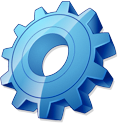U.S. Department of Health & Human Services - 200 Independence Avenue, S.W. - Washington, D.C. 20201
Want to place content from HHS websites onto your own site? Syndication allows you to offer high-quality HHS content in the look and feel of your site, without the need to manually update it.
With the HHS Syndication API, you can retrieve HHS's vast repository of public health content.

An API, or Application Programming Interface, is a way for two computer applications to talk to each other in a common language that they both understand. HHS's API provides a structured way to get HHS content in a predictable, flexible and powerful format.
